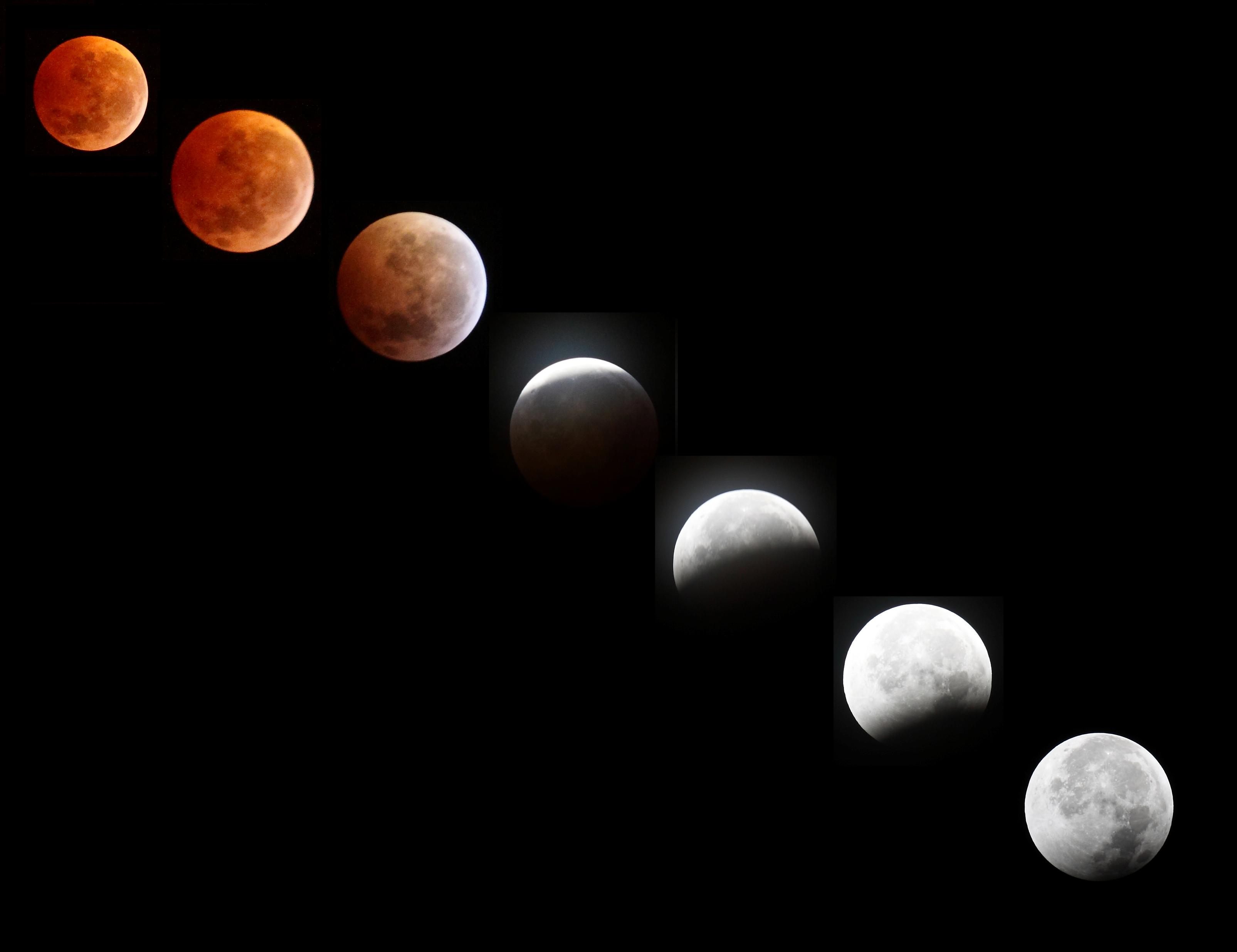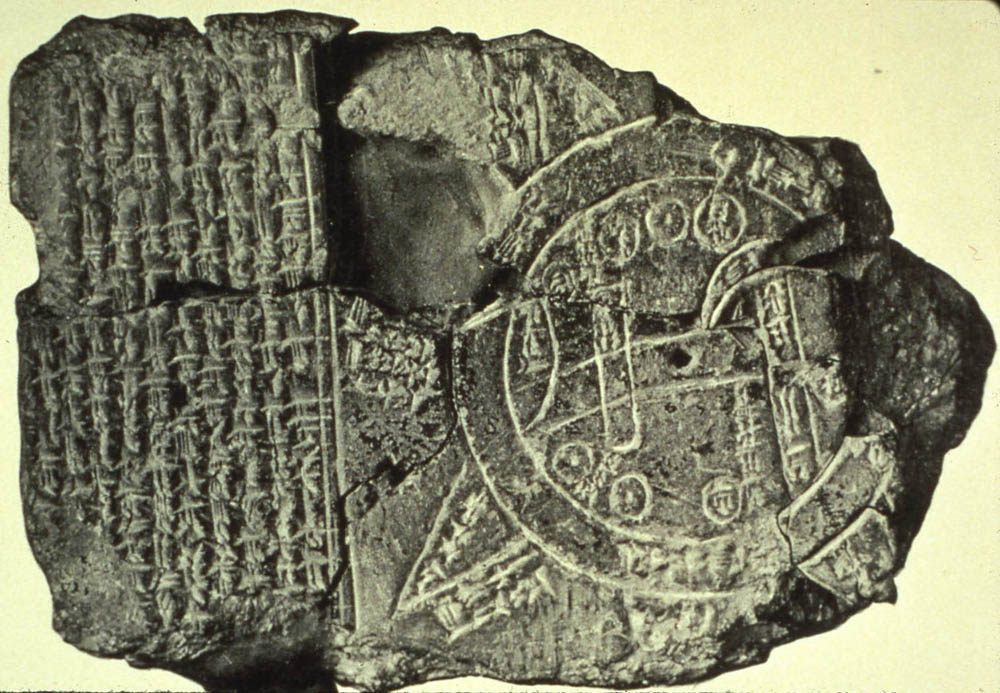How to Predict an Eclipse Without a Computer
Some methods are easier than others.

Human beings have been predicting solar and lunar eclipses for almost 2,000 years, long before they knew what exactly was happening or why it is meaningful. These days, we have a pretty good understanding of when they’ll take place: NASA has plotted out every single one for the next 1,000 years or so (and the previous 4,000). But if you don’t want to rely on the experts, what are your options for predicting a solar eclipse yourself?
Counting
Perhaps the easiest way to predict a solar eclipse doesn’t require any sophisticated knowledge of the universe whatsoever‚ just the ability to watch, and to count, for a long time. In fact, people have been watching and counting—making calendars, essentially—for almost as long as they’ve farmed the land. “Every organized, agriculturally based civilization develops a calendar, because that’s what you need to determine planting times,” says Ramon Lopez, a space physicist at the University of Texas at Arlington. “You don’t need a heliocentric model, you just need to know rising and setting times of various models in the sky.”
Ancient people may not have known that the Earth is round, or spinning, or orbiting the Sun, but once they started recording when things happened, they began to notice patterns. One of the clearest patterns for predicting solar eclipses is the Saros cycle, first observed by the ancient Mesopotamians. Within a Saros series, solar eclipses occur at intervals of 223 lunar months. These cycles each last around 1,000 years—eclipse after eclipse after eclipse.
Unfortunately, the subsequent Saros eclipses don’t happen in the same place, but one-third of the way around the Earth. It takes three Saros cycles for an eclipse to recur in a similar place as the first one—approximately 54 years later.

There are three challenges to predicting eclipses with Saros cycles. The first is that two out of every three eclipses are going to be very far away from where any given one was first observed. The second is that the time when one might occur could be at night, and therefore unobservable. The third is that multiple cycles occur at the same time. Hot on the heels of the upcoming 2017 eclipse that will pass over North America, for example, is another total solar eclipse, in April 2024, that will span the country from Texas to Maine. But the two aren’t related: Each is part of its own Saros series. Given that there are about 40 of these cycles taking place at any given time, and each lasts 1,000 years, even if you’re lucky enough to observe multiple eclipses, it’s hard to tell which is part of which pattern. Pattern recognition is a reliable and accurate way to predict solar eclipses, but it requires long-term, dependable observations made over as much as half a century or more.
Furthermore, there are other eclipse cycles—known to ancient astronomers across the world—including the Metonic Cycle, which is 19 years long, the 345-year Hipparchus cycle, and, in China and Central America, the Tritos, which is just under 11 years long (plus the Triple Tritos, 32.7 years in total). By the first few centuries A.D., ancient Roman astronomers were able to predict eclipses with some accuracy using pattern recognition, though not because anyone understood the nature of the celestial event.
Some Quite Laborious Mathematics
Another way of predicting an eclipse—one that requires far more understanding of the universe and time—is to work it out mathematically. In an eclipse, lunar or solar, the Sun, Moon, and Earth line up to produce what’s excitingly known as a syzygy. Figuring out when this will happen is a matter of geometry. Alexander Jones, Professor of the History of the Exact Sciences in Antiquity at New York University, says the math is not necessarily that hard, but there’s a lot of it. “It doesn’t take anything that’s much more advanced than, say, grade school mathematics to do,” he says, “but it would take you working with pencil and paper probably a couple of hours to do a complete calculation.”
“You really need to know that the Earth is round, and you need to know where you are on that spherical Earth, because the shadow of the Moon is such a small area,” adds Jones. “If you don’t know your location on the Earth, you’re not going to make forecasts of solar eclipses that are very meaningful.” By the last few centuries B.C., the ancient Mesopotamians had more or less figured out the mathematical approach, but they didn’t know that the world was round, or where they were on it.

For the calculation, you have to compute the motion of the Moon’s shadow on a plane that crosses the Earth’s center. From there, what’s known as the “shadow cone” can be projected onto the Earth’s surface. This is known as the Besselian method and, according to NASA, even today is “the most powerful technique [to predict solar eclipses], even with the application of the digital computer.” Here’s how they explain it:
To define the Besselian elements of an eclipse, a plane is passed through the center of Earth which is fixed perpendicular to axis of the lunar shadow. This is called the fundamental plane and on it is constructed an X-Y rectangular coordinate system with its origin at the geocenter. The axes of this system are oriented with north in the positive Y direction and east in the positive X direction. The Z axis is perpendicular to the fundamental plane and parallel to the shadow axis. The X-Y coordinates of the shadow axis can now be expressed in units of the equatorial radius of Earth. The radii of the penumbral and umbral shadows on the fundamental plane are also tabulated as L1 and L2, respectively. The direction of the shadow axis on the celestial sphere is defined by its declination ‘d’ and ephemeris hour angle ‘m’. Finally, the angles which the penumbral and umbral shadow cones make with the shadow axis are expressed as f1 and f2, respectively. These eight parameters, often tabulated at hourly intervals serve as the only input needed to characterize an eclipse.
Grade school mathematics? Perhaps not. For the mathematically uninclined, it’s headache-inducing just to look at these instructions—almost as much as looking at a solar eclipse with the naked eye, though far less likely to irreparably damage your vision. Probably.
Get a Machine to Do It for You
You don’t need to have a modern computer or even a calculator to predict an eclipse, though some kind of a machine may be helpful. One of the most exciting historical examples is the Antikythera Mechanism, an ancient machine that kept track of the date, and the positions of the Sun, Moon, and planets. “It also predicted eclipses and kept track of upcoming Olympic games,” Jones writes in his book A Portable Cosmos: Revealing the Antikythera Mechanism. The machine worked through a series of interlocking dials—37 in total—“which may have been manipulated by a hand crank.”

It’s a gloriously intricate piece of ancient technology, likely once very beautiful, and mostly made of bronze. Found in 1901 on a wreck off the Greek island of Antikythera, it is believed to date to some time between 205 and 87 B.C., though the wreck itself probably happened around 65 B.C. On the front of the mechanism, a clock-like face displayed the calendar date through two concentric circles: one showing the 12 Greek zodiac signs, and the other the 12 Egyptian months of the year.
The Antikythera Mechanism needed resetting every 223 months for the Saros cycle, Jones says. Each period was divided into little cells for each lunar month, with inscriptions that indicated when eclipses of the Sun or Moon were possibilities. On top of that, he says, “there was an indication of what would be the estimated time of the day or night, depending on what kind of eclipse it was.” The actual data behind that counting system, however, was based on mathematical information. “In a way,” Jones says, “both methods are being used.”

Look to the Shadows
There’s yet another way to predict solar eclipses—though it only works in the hour or so before everything starts to darken—with a pinhole camera. These are easy enough to make, but also appear naturally.
Take, for instance, a perforated leaf that has served as some insect’s snack. If you hold it up to the sun, the shadow will be leaf-shaped, with a little speck of light in the middle. Depending on its distance from the ground, the light spot will be round, like the sun. But, if an eclipse is on its way, that spot will show a crescent shape, long before everything starts getting dark.
A similar effect can be observed in any crystal with multiple flat facets. Pull the shades almost all the way down, so just a sliver of sunlight slips through. If the crystal is placed on the sill in front of that sliver, spots of light refracted onto the walls will form that same crescent shape ahead of an eclipse.
It’s not much of a predictive tool, but it might be a good way to show off your eclipse knowledge next Monday, just before the whole thing goes down.

























Follow us on Twitter to get the latest on the world's hidden wonders.
Like us on Facebook to get the latest on the world's hidden wonders.
Follow us on Twitter Like us on Facebook